Chewa
A Language Learning Application for Native Kenyan Languages.
Context
This project was our final project in a Coding Bootcamp based in Nairobi, Kenya called Moringa School and took us three weeks to complete. The Objective was to demonstrate an understanding of the full end to end process of development, from user research, all the way to building a minimal viable product in whatever technology we were comfortable with. Ours was built in Django framework. The iteration below is a redesign I did in my own time which helped me refine my prototyping skills.
My Role
UI Design, Team Lead, Prototyping
Problem Statement
Kenya is a multicultural country, with two Lingua Francas, English and Kiswahili, and has up to 44 ethnic languages spoken across the country. Many like myself and my team in this project grew up with some level of understanding of our mother tongues but felt a missed opportunity to learn it. We proposed “Chewa” as our final project in our 6 month bootcamp at Moringa to address this problem.
Goals
Create a language learning platform for young Kenyans or curious expatriates by building an inventory of local ethnic languages to help with their learning and track their progress with quizzes, thus promoting multiculturalism in the younger generation.
Research & Understanding
We started our research by sending out a survey amongst our cohort to establish the demographic of our user, how many if any local languages were spoken in their home, how they learnt that language and whether an app, web or otherwise was the appropriate platform to advance their learning. Below are the results:.
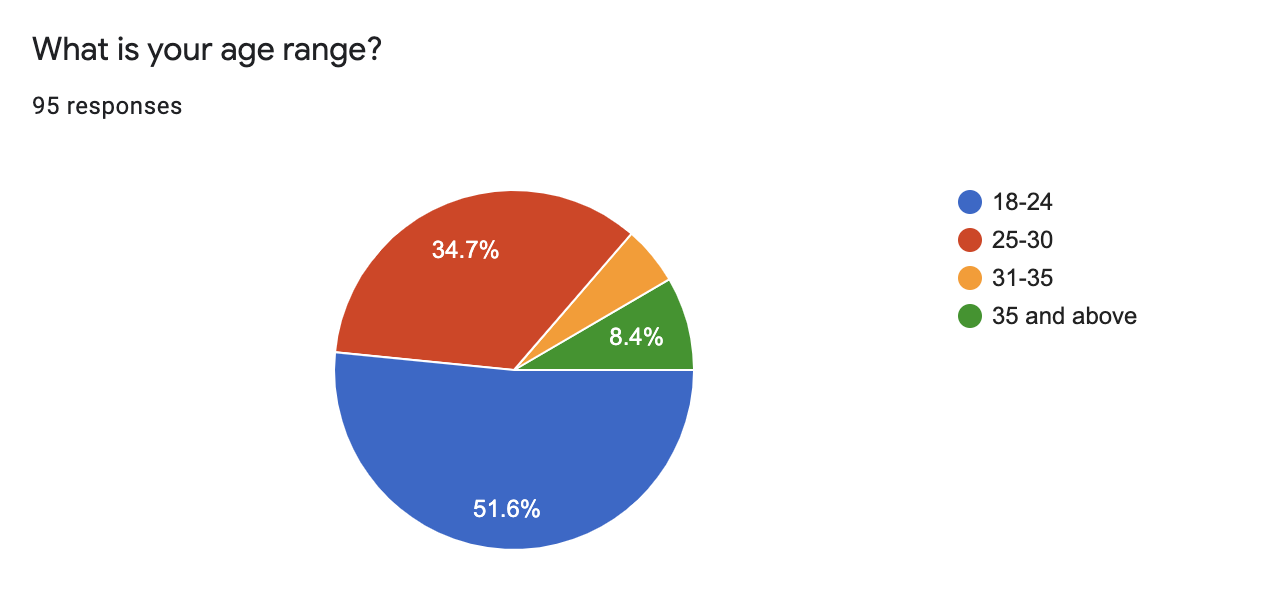
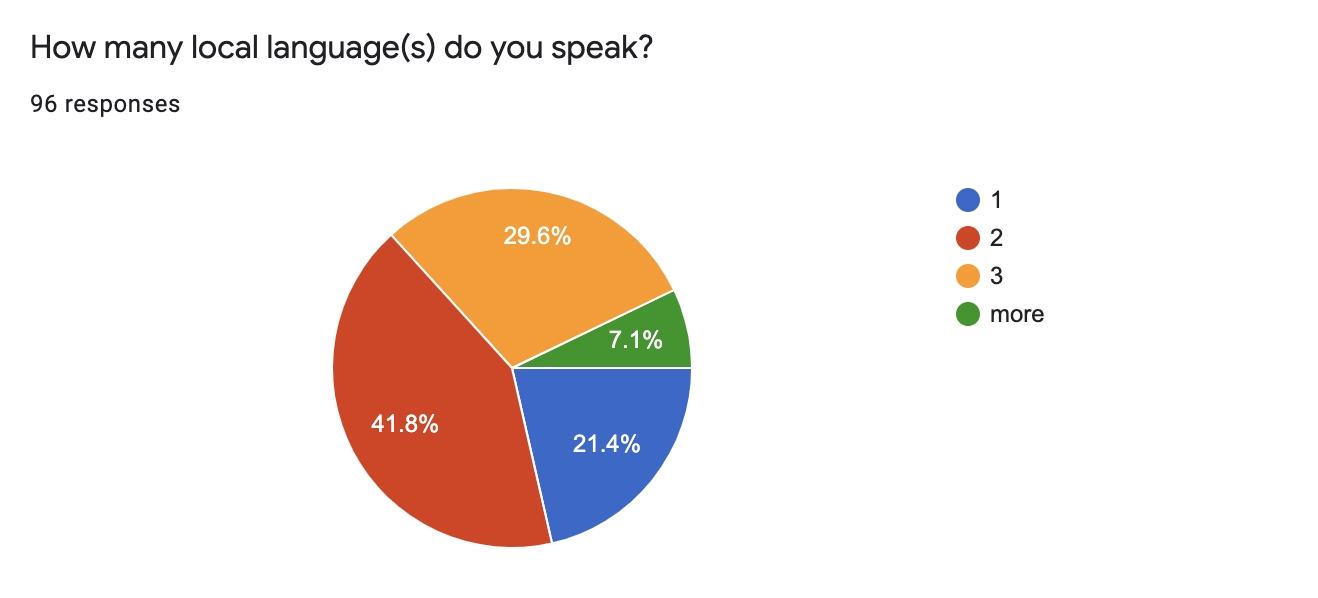
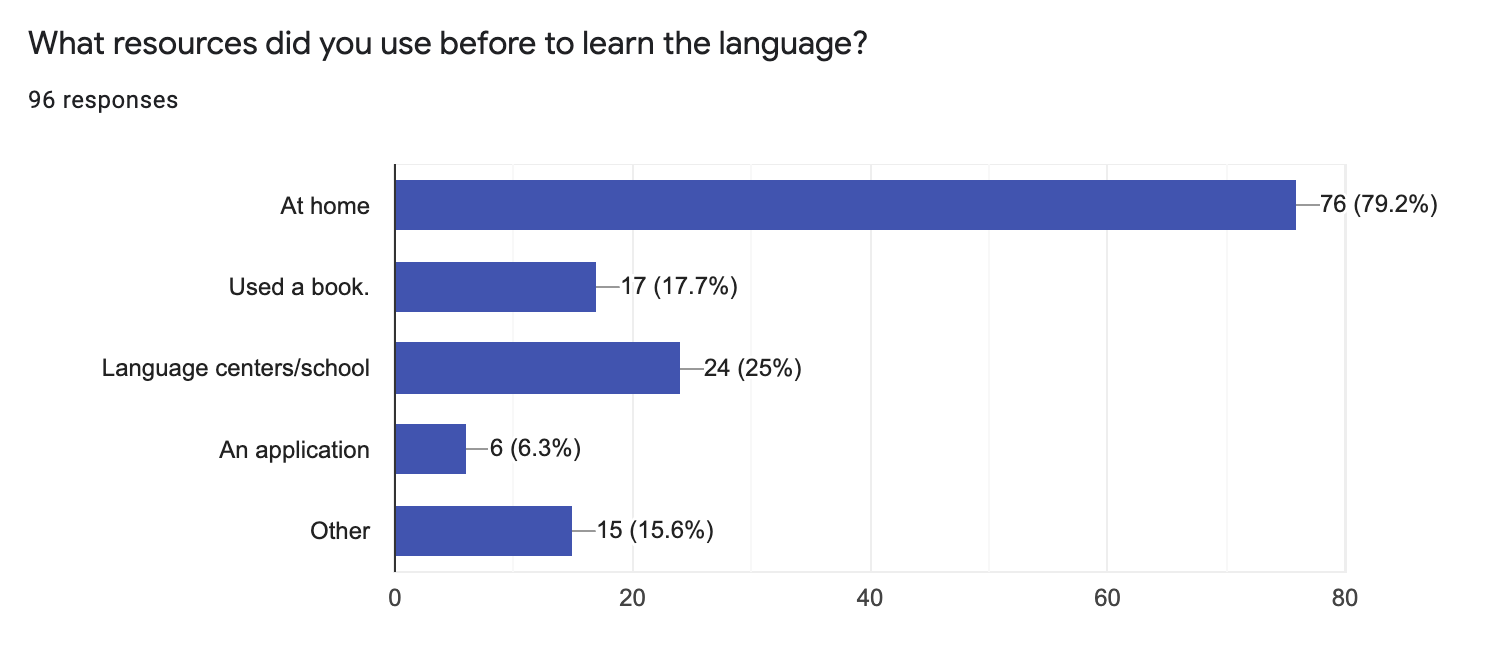
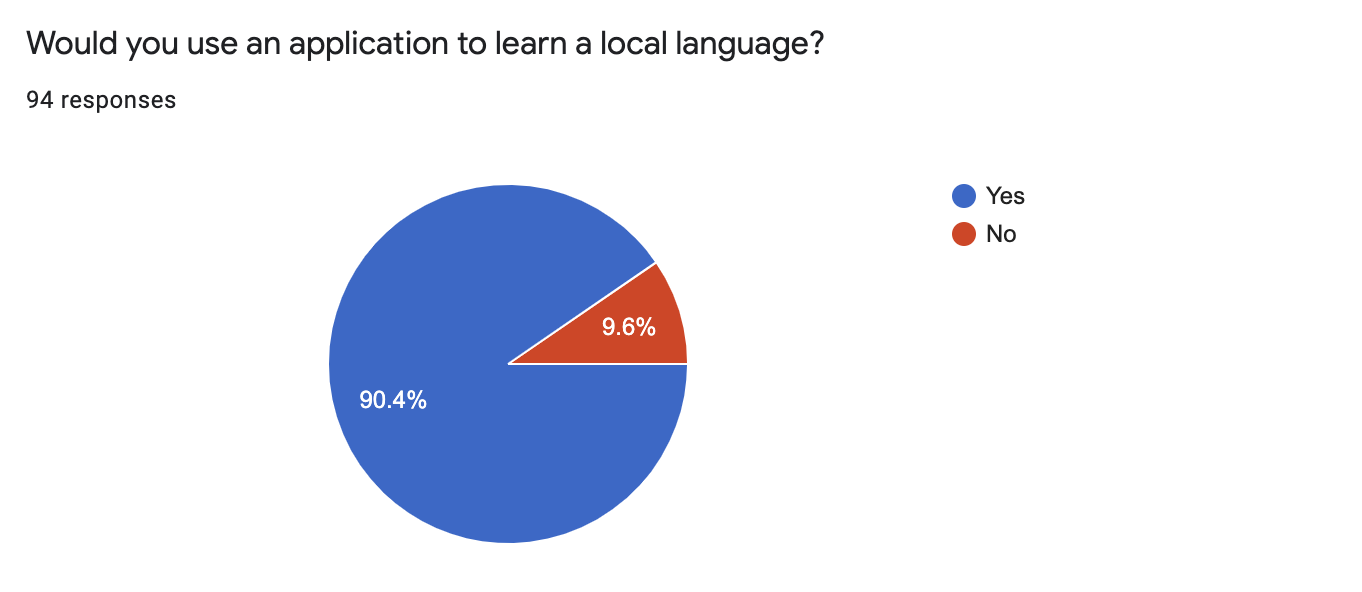

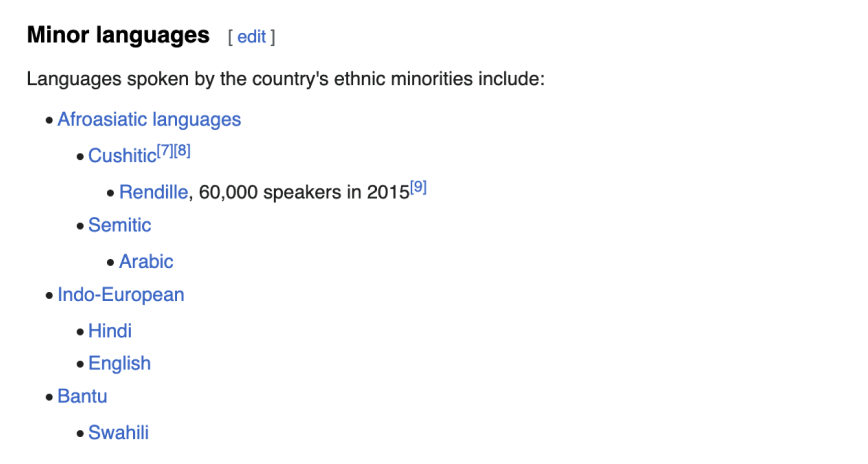
User Personas
The research above led us to two types of personas that we felt might use our products.

Age: 19
Profession: Student
Pain point: Was not raised with their mother tongue and wants to learn the basics.

Age: 36
Profession: Project Manager
Pain point: Has expatriated to Kenya from abroad and wants to learn Swahili.
Initial Sketches
The following screens highlight the initial flow and the important features to demonstrate in POC. There will be a generic authentication flow as the app will include user management. They will also include an opportunity to select the languages of preference, and will take you on to the lessons and quizzes.
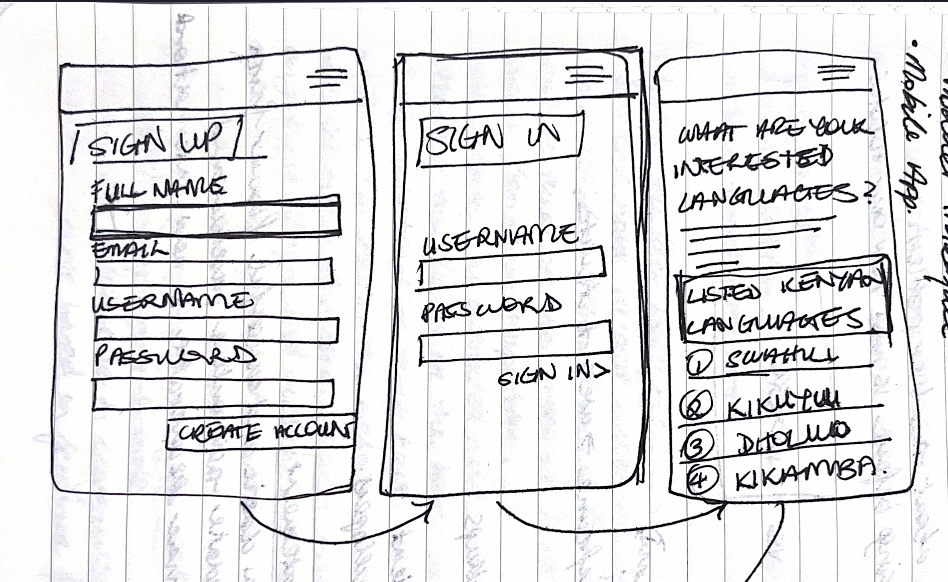
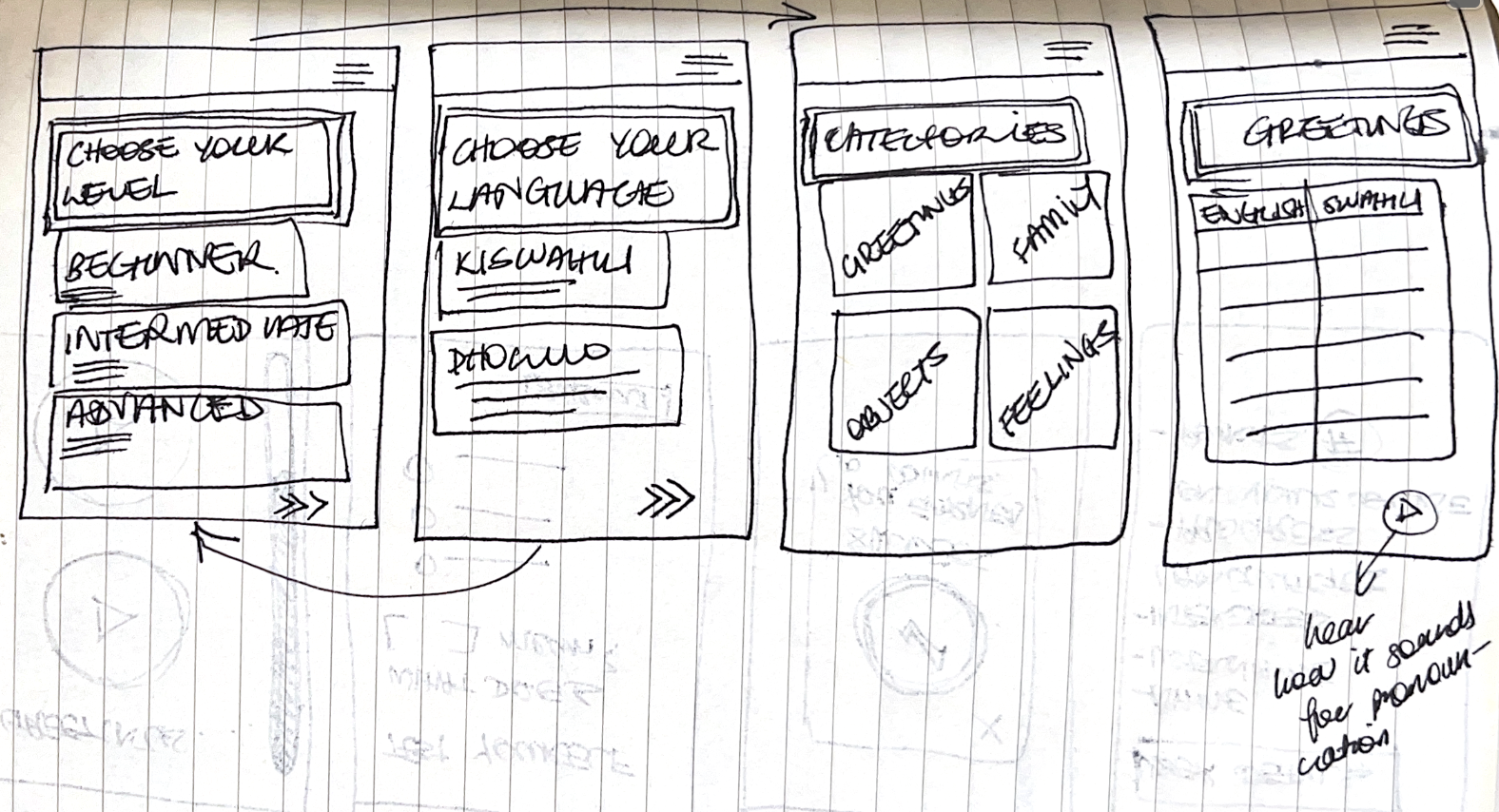
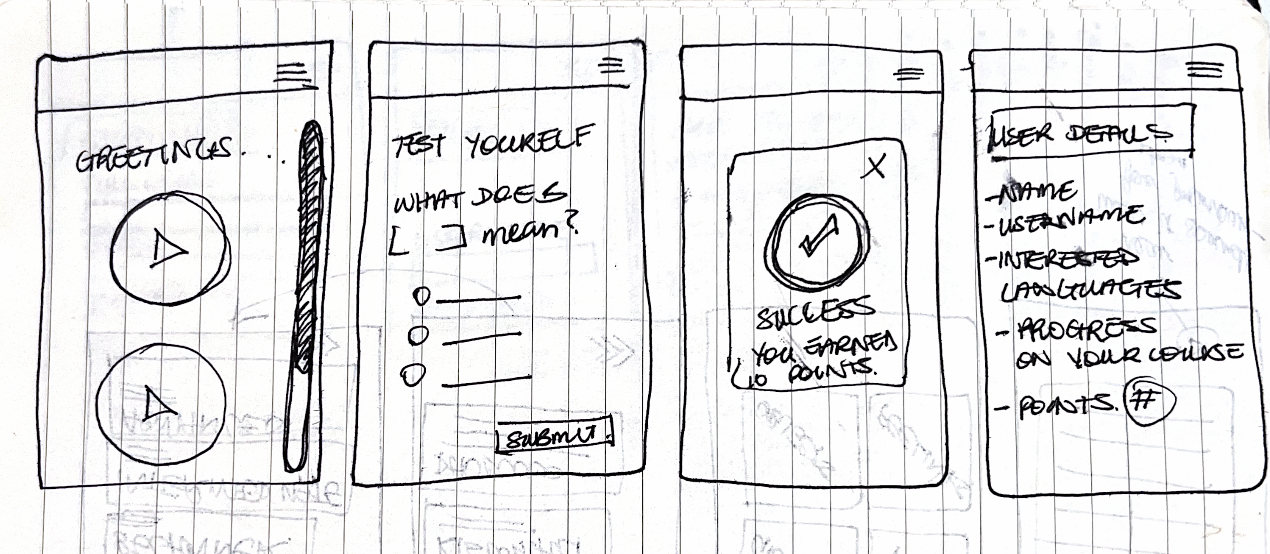
Wireframes
Final Designs
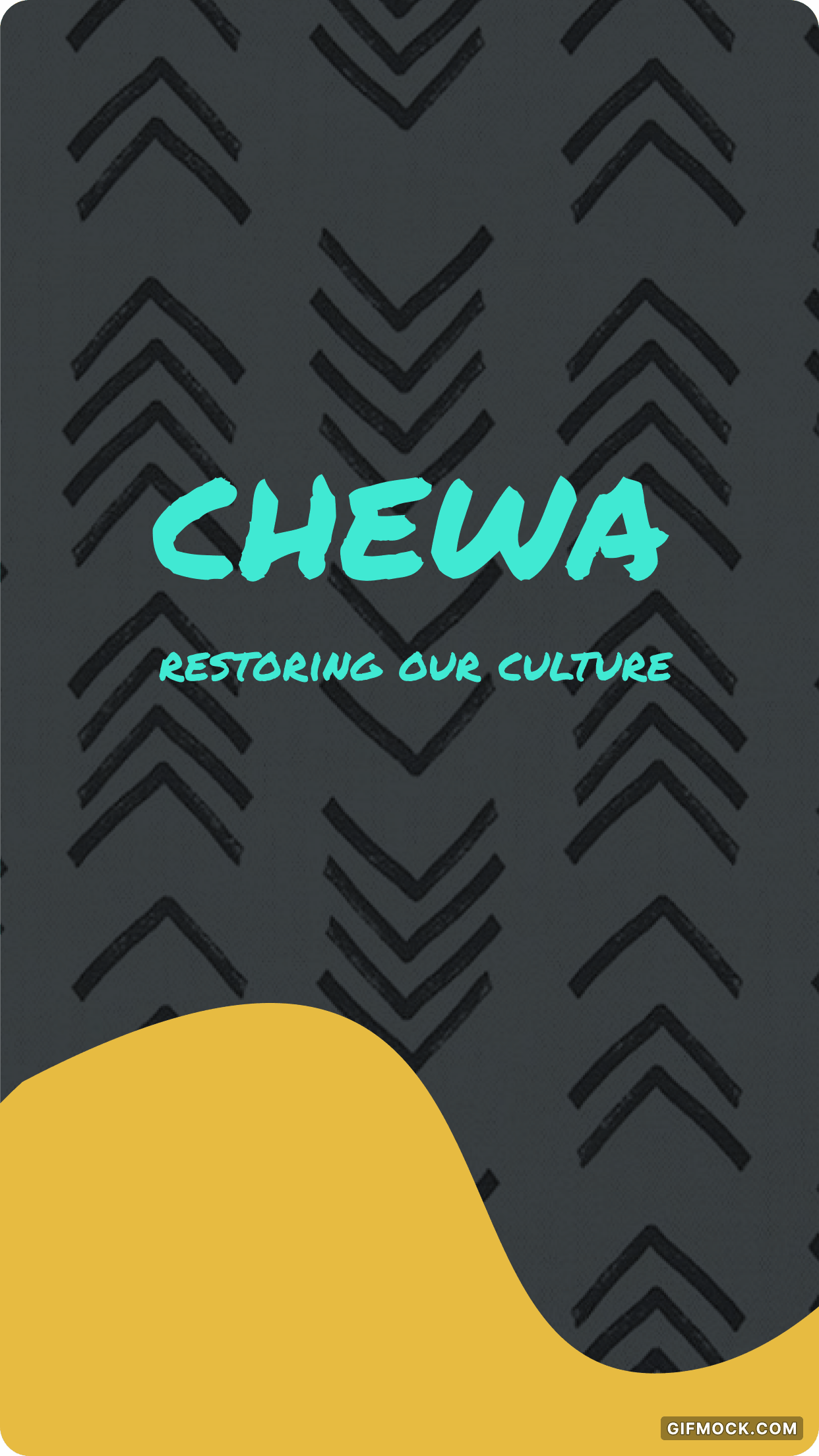
Landing Page
In addition to the wireframes, Chewa needed a landing page that explained more about the mission of the app. Furthermore, the landing page would allow the app to be discoverable via a Google search.
Authentication
Given this app is information centric, the general layout is clean and light, however I wanted to add some texture to the onboarding screens, specifically where it aids in setting the tone of the colour schemes used across the app.
.gif)
.gif)
.gif)
Learning Flow
The user selects the language based on what their languages of interest choices, and then will progress to their level of fluency. For the Proof of Concept, we decided to select the languages that members of the group had access to and were familiar enough to verify. That consisted of Kiswahili, Dholuo and Kikuyu. These are representative of some of the most widely spoken languages and will
The design here uses a lot more white space, as there is a lot of information to take in, and the simplicity in the learning style is taken from children’s language books. The benefit of a learning app is we can take it further with audio capability which is included in this flow.
.gif)
Many of the languages on offer will need audio support within the lesson, to not only encourage correct pronounciation but also because many are tonal, and meaning may differ depending on the tone. We included visual queues with the audio for those who are visual learners.
.gif)
.gif)
Testing Flow
Beyond the capability of being able to hear the way the word sounds, the user can test their new knowledge with a quick quiz. If they are unfamiliar, they can get a hint, which gives them a visual prompt from the previous lesson. This takes in to account accessibility for those that not only learn in different formats but also for those that have different styles of learning e.g visual learners.